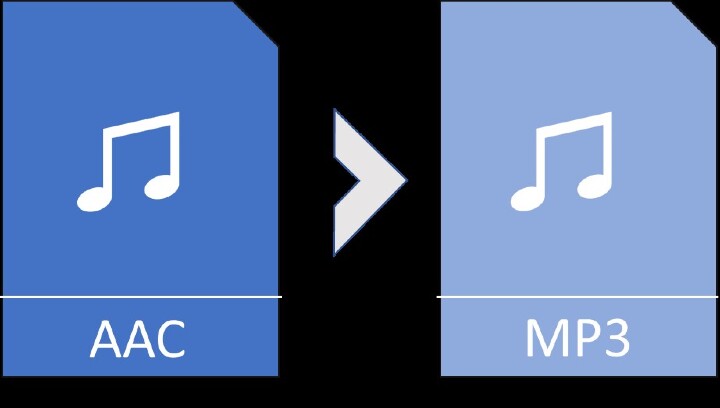
 Data Structure
Data Structure Networking
Networking RDBMS
RDBMS Operating System
Operating System Java
Java MS Excel
MS Excel iOS
iOS HTML
HTML CSS
CSS Android
Android Python
Python C Programming
C Programming C++
C++ C#
C# MongoDB
MongoDB MySQL
MySQL Javascript
Javascript PHP
PHP
- Selected Reading
- UPSC IAS Exams Notes
- Developer's Best Practices
- Questions and Answers
- Effective Resume Writing
- HR Interview Questions
- Computer Glossary
- Who is Who
What is the full form of AAC ?
What is an AAC file ?
An AAC file is a digital audio file that uses the Advanced Audio Coding (AAC) format for encoding and compressing audio data. AAC is a popular audio format that provides high-quality audio while using less storage space than other formats such as MP3. AAC files can be played on a wide range of devices, including computers, smartphones, tablets, and dedicated music players. They are commonly used for digital music downloads, online music streaming, and digital broadcasting.
AAC is a popular audio format that provides high-quality audio while using less storage space than other formats such as MP3. AAC files can be played on a wide range of devices, including computers, smartphones, tablets, and dedicated music players. They are commonly used for digital music downloads, online music streaming, and digital broadcasting.
To create AAC files, you can use a variety of software tools, including audio editing software, media players, and online conversion services. Many media players and audio editing software also support the conversion of other audio formats to AAC, allowing you to easily convert your existing audio files to the AAC format.
Brief History of the AAC File
The Advanced Audio Coding (AAC) format was first introduced in 1997 as a successor to the popular MP3 audio format. The development of AAC was led by the Fraunhofer Institute for Integrated Circuits in Germany, the same organization that developed the MP3 format.
AAC achieves this by using more advanced compression algorithms, which can more accurately represent complex audio signals while using less storage space. In 2003, Apple adopted the AAC format as the default audio format for its iTunes music store, which helped to further popularize the format.
Over the years, AAC has continued to evolve and improve. In 2006, a new version of AAC called High-Efficiency AAC (HE-AAC) was introduced, which provides even better compression efficiency and improved performance at low bitrates. This format is now widely used for digital broadcasting and online music streaming. Today, AAC is one of the most popular audio formats, used by millions of people around the world to listen to music, watch videos, and enjoy other types of digital audio content.
AAC File Format Specifications
Here are some of the key specifications of the AAC file format ?
File extensions ? AAC files can have a variety of file extensions, including .m4a, .m4b, .m4p, .m4v, .3gp, and .mp4.
Audio compression ? AAC uses a variety of compression techniques to reduce the size of audio files while maintaining high quality. These techniques include perceptual coding, frequency-domain coding, and transform coding.
Sampling rates ? AAC supports a wide range of sampling rates, from 8 kHz to 96 kHz.
Bitrates ? AAC supports a wide range of bitrates, from 8 kbps to 320 kbps. The exact bitrate used depends on the desired level of audio quality and the amount of storage space available.
Channel configurations ? AAC supports a variety of channel configurations, including mono, stereo, and multichannel (up to 48 channels).
Metadata ? AAC files can include metadata such as title, artist, album, and genre information, which can be used by media players and other software to organize and display the files.
Digital rights management (DRM) ? Some AAC files may be protected by digital rights management (DRM) technologies, which restrict the ways in which the files can be used and distributed.
AAC is a highly versatile and flexible format that can be used in a wide range of applications and settings, from mobile devices to digital broadcasting to online music streaming.
AAC vs MP3 - improvements
Here are some of the improvements that AAC has over MP3 ?
| MP3 | AAC | ||
|---|---|---|---|
| 1. | Sound Quality | MP3 has low sound quality at lower bit rates. It involves sounds that are inaudible to human ears. | AAC uses more advanced compression techniques, such as perceptual coding, to remove sounds that are inaudible or less audible to human ears. |
| 2. | Compression Efficiency | MP3 has lower compression than AAC. | AAC can produce smaller file sizes while retaining better sound quality. This makes it ideal for delivering audio over the internet, where bandwidth is limited. |
| 3. | Channel Configuration | MP3 supports a smaller range of channel configurations than AAC. | AAC supports a wider range of channel configurations including mono, stereo, and multi-channel surround sound. |
| 4. | Compatibility | MP3 is generally less compatible with various devices than AAC. | Most modern devices support AAC playback, including mobile devices, game consoles, and set-top boxes. |
| 5. | Licensing | MP3 is subject to licensing fees. | While AAC is not. This makes AAC a more cost-effective option for content providers and users. |

Figure 2: AAC vs MP3
Conclusion
In conclusion, AAC is a digital audio compression technology that was developed to improve upon the limitations of MP3 while retaining its advantages. AAC supports a wide range of bit rates and channel configurations. AAC also supports digital rights management, making it an ideal format for the music and film industries. AAC has several benefits over other audio formats, including superior sound quality and better compatibility with various devices.
FAQs
Q1. Is AAC the best audio format?
Ans. The choice of audio format depends on the specific application and requirements. While AAC is a popular and flexible format, other formats like FLAC and WAV may be more suitable for certain applications, such as lossless audio playback.
Q2. How do I convert my audio files to AAC?
Ans. There are various software programs and online tools that can be used to convert audio files to AAC. Some popular options include iTunes, VLC Media Player, and online converters like Convertio.
Q3. Can I play AAC files on my device?
Ans. Most modern devices support AAC playback, including mobile devices, game consoles, and set-top boxes. However, some older devices may not support AAC playback, so it is always a good idea to check your device's specifications.

